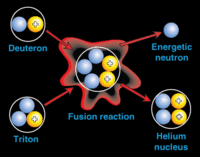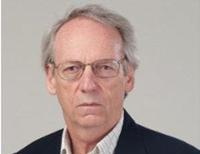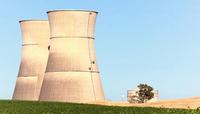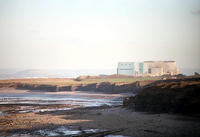-
Part Three: Bechtel and the Y-12 security breach
With an annual security budget of $150 million, the Y-12 Nuclear Complex at Oakridge, Tennessee, prided itself on its high-tech security system built to protect more than 179 tons of uranium. After Sister Megan Rice, age 82, and two confederates, both senior citizens, too — the three were armed with nothing but wire cutters and flashlights — broke into the Y-12 facility on 28 July 2012, one security guard was fired. Numerous investigations and reports, however, show that last July’s incident was but one in a series of security failures and breaches at nuclear sites under the supervision of the National Nuclear Security Administration (NNSA). In May, Sister Rice and her aging collaborators will stand trial. Bechtel, a major contractor sharing responsibility for the documented security lapses at Y-12, has just received a federal nuclear plant security contract worth more than $22 billion.
-
-
Uranium mining debate divides Virginia
In Virginia a fight has begun over whether to drill for uranium. Some feel the drilling, which would create about 1,000 jobs and bounty of tax revenue in addition to nuclear fuel, is important for a state whose main industries, such as tobacco and textiles, are failing. Those who oppose the drilling fear the contamination of drinking water in case of an accident, and a stigma from uranium which would deter people and businesses from moving to the area.
-
-
Thorium holds promise of safer, cleaner nuclear power
Thorium as nuclear fuels has drawbacks, but its main advantage includes generating far less toxic residue. The majority of the mineral is used during the fission process, and it can burn existing stockpiles of plutonium and hazardous waste, saving the need to transport it and bury the waste in concrete. If thorium becomes available as a source of energy in the future, the world will rely less on coal and gas, and wind turbines will become a thing of the past. The risk of a global energy crunch will decrease considerably.
-
-
Nuclear-powered deep space rockets

In the 1960s the federal government tested nuclear rocket technology for the flights following the Apollo moonshots. The Los Alamos National Laboratory in New Mexico set up Project NERVA (Nuclear Energy for Rocket Vehicle Application). The concept was to use a nuclear reactor to blast a rocket out of Earth’s orbit. Concerns about safety and cost put an end to the project in 1973, but now there are some it is time to revisit the concept of nuclear rockets for deep space exploration.
-
-
New design for clean nuclear fusion reactor unveiled

Researchers have patented a nuclear fusion reactor by inertial confinement which, in addition to being used to generate electric power in plants, could be applied to propel ships. The fusion chamber shape and size can adapt to the type of fuel being used.
-
-
U.K. revises nuke emergency plans post-Fukushima
The Sizewell nuclear power station in Suffolk, England, was decommissioned in 2006, but after the 2011 Fukushima disaster, the Suffolk authorities thought there was a need to upgrade the emergency plans for the people living around the plant. There are disagreements, however, over the radius of the emergency zone around the plant, and how many people should be included i evacuation plans and given potassium iodide tablets in the event of a radiation leak.
-
-
Tiny helpers: Atom-thick flakes help clean up radioactive waste, fracking sites

Graphene oxide has a remarkable ability quickly to remove radioactive material from contaminated water. Researchers determined that microscopic, atom-thick flakes of graphene oxide bind quickly to natural and human-made radionuclides and condense them into solids. The discovery could be a boon in the cleanup of contaminated sites like the Fukushima nuclear plants, and it could also cut the cost of hydraulic fracturing (“fracking”) for oil and gas recovery and help reboot American mining of rare earth metals.
-
-
France is the forerunner in nuclear power generation – but for how long?
France has been held up, worldwide, as the forerunner in using nuclear fission to produce electricity; a third of the nation’s nuclear reactors, however, will need replacing in the next decade, and public opinion has shifted toward reducing reliance on nuclear power; does France have the means or desire to unplug from nuclear power?
-
-
Part Two: NNSA and private contractors’ “nuclear safety culture” responsible for Y-12 security breach?

After Sister Susan Rice, age 82, and two other senior confederates allegedly broke into the Y-12 National Security Complex at Oak Ridge, Tennessee on 28 July 28th, initial spin on the breach at this highly secured facility focused upon blaming a lone security guard;the security breach at Y-12, however, should be more accurately understood as revealing a more systemic flaw: the breach was not the fault of a single guard, but as a security failure similar to other failures in a number of facilities under the purview of the National Nuclear Security Administration (NNSA) experiencing repeated security and safety lapses
-
-
New, quick way to ID people exposed to dirty bomb, radioactive radiation
Research conducted by scientists from the Berkeley Lab could lead to a blood test that detects if a person has been exposed to radiation, measures their dose, and separates people suffering from inflammation injuries — all in a matter of hours
-
-
Nuclear wonder fuel poses serious weapons proliferation risk

Thorium is being touted as an ideal fuel for a new generation of nuclear power plants, but new study shows that it may pose a serious weapons proliferation risk; experiments to separate protactinium-233 show that it is feasible that just 1.6 tons of thorium metal would be enough to produce eight kilograms of uranium-233, which is the minimum amount required for a nuclear weapon; a nuclear reactor using thorium for fuel could produce that amount of thorium metal in less than a year
-
-
Critics: post-Fukushima nuclear power may be safer, but it is still not cost effective
The Southern Company wants to show its customers that it has learned from the Fukushima disaster in Japan and has protected its nuclear reactors to make sure the same thing does not happen in the United .States’ critics of nuclear power are not convinced – and also, they say, alternative energy sources, such as natural gas, are much cheaper to produce
-
-
Life of U.K. nuclear power plants extended

U.K. operator EDF Energy has announced it will extend the expected operating life of two of its nuclear power stations by seven years; Hinkley Point B and Hunterston B power stations are now expected to remain operational until at least 2023, generating enough electricity for around two million homes; the decision follows the five year extensions to Heysham 1 and Hartlepool announced in 2010 and come after extensive reviews of the plants’ safety cases and continuing work with the independent nuclear regulator
-
-
Part One: Don’t blame the security guard at Y-12
On 28 July 2012, using only wire cutters and flashlights, peace activist Sister Susan Rice, 82 years of age, and two other confederates – both senior citizens themselves — successfully bypassed the elaborate, and expensive, security system around Y-12 National Security Complex at Oak Ridge, Tennessee; though the lone security guard at Y-12 has become a convenient scapegoat, it now appears that the breach reflects system-wide security and safety concerns at nuclear facilities under the National Nuclear Security Administration (NNSA); the breach is best understood as the end result of long standing management and organizational failures within and between DOE, NNSA, and NNSA’s private contractors; the NNSA, in fact, appears burdened by many of the same issues it was created in 2000 to resolve
-
-
Tetrapod robot developed for investigative, recovery work inside post-accident nuclear plants
Toshiba has developed a tetrapod robot able to carry out investigative and recovery work in locations which are too risky for people to enter; the multiple joints of its legs are controlled by a dedicated movement algorithm which enables the robot to walk on uneven surfaces, avoid obstacles, and climb stairs, securing access into areas which are challenging to be reached by wheeled robots or crawlers
-
More headlines
The long view
Smaller Nuclear Reactors Spark Renewed Interest in a Once-Shunned Energy Source
In the past two years, half the states have taken action to promote nuclear power, from creating nuclear task forces to integrating nuclear into long-term energy plans.
Keeping the Lights on with Nuclear Waste: Radiochemistry Transforms Nuclear Waste into Strategic Materials
How UNLV radiochemistry is pioneering the future of energy in the Southwest by salvaging strategic materials from nuclear dumps –and making it safe.
Model Predicts Long-Term Effects of Nuclear Waste on Underground Disposal Systems
The simulations matched results from an underground lab experiment in Switzerland, suggesting modeling could be used to validate the safety of nuclear disposal sites.
